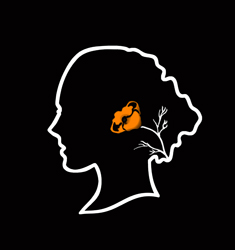Stephanie Mutz, oil on canvas 24x36 by Holli Harmon
Ecology in Our Backyard
Grade: 7th to 9th Grade
Subjects: Biology, Ecology, Sustainability, the Environment
Class Session: 1
Lesson Summary: Fish and Seafood are foods we all eat, but rarely question where in the ocean our food comes from or how the food was caught and prepared for our tables and markets. Students will learn basic terms of ecology and ocean fisherie as well as understanding of food systems. Stephanie Mutz’s story offers a dynamic window into the fishing industry where students have a personal touch point with concepts of biology and sustainability.
Lesson Objectives:(see resources below)
-Students will learn the basics of sustainable fishing and central components to our pacific ocean’s ecological habitat for a variety of species off the California central coast.
- Understand the term ‘bycatch’ and a few methods to prevent it.
- Be able to create a representation either by visuals or written paragraph of what sustainable and unsustainable fishing practices look like.
- Be able to name pros and cons of wild caught and farm raised fish.
- Understand how to apply the meaning of ‘sustainable’ with our own oceans.
Materials:
- Portrait of Stephanie Mutz – Holli Harmon
- Video Interview with Stephanie Mutz
- The Birth of Venus Sandro Botticelli
- Diagram illustrating sustainable fishing
http://www.greenpeace.org/international/Global/international/publications/oceans/2013/Longline-Infographic.jpg - fishing line examples
- Layers of the ocean- http://www.adducation.info/earth-general-knowledge/layers-of-the-ocean/
- https://www.seafoodwatch.org/- “Good Seafood” cards
-http://www.terrapsych.com/ecology.html - short, easy terms and defintions
Lesson Steps:
1. Ask students “How many of you enjoy seafood?” Follow up with: “How many of you know where your seafood comes from and how it is caught?”
2. Introduce: Today we are going to learn about the ecology of our oceans and how it relates to sustainable fishing. We will be using previous content knowledge on marine life cycles, the food chain and conservation in today’s lesson.
3. Pull up diagrams of sustainable fishing. Consider the terms: bycatch, wild caught vs. farm raised and sustainable practice.
4. Watch the video interview of Stephanie Mutz by Holli Harmon and Tina Love. Have students consider: What is Stephanie’s role in sustainable fishing? What surprised you about her story? How does this make you feel or think about seafood differently?
5. Show the portrait of Stephanie Mutz by Holli Harmon. See, think, wonder.
6. Show Botticelli’s The Birth of Aphrodite. See, think, wonder. Compare and contrast
7. Consider together the layers of the ocean and have students write a short reflection on the portrait and the interview.
8. Talk over sustainable fishing practice with the handout from the Monterey Bay Aquarium.
9. Have students brainstorm ‘action plans’ to raise awareness about sustainable fishing practice, or plan a class trip to a local fish market.
Assessment:
-Students will be assessed on their participation in class
-Their ability to draw connections between the terms and Stephanie Mutz’s work
-Their ability to draw comparisons and contrasts and generate questions between the paintings
-Their ability to creatively generate a plan for seafood consumption awareness
Extensions:
- School trip to a local fishery
- Lively debate over farm raised or wild caught http://well.blogs.nytimes.com/2014/12/18/ask-well-wild-fish-vs-farmed-fish/
Standards Addressed: (Common Core, CA Ed)
English Language Arts 8th Grade
Craft and Structure:
4. Determine the meaning of words and phrases as they are used in a text, including figurative, connotative, and technical meanings; analyze the impact of specific word choices on meaning and tone, including analogies or allusions to other texts.
Integration of Knowledge and Ideas
7. Evaluate the advantages and disadvantages of using different mediums (e.g., print or digital text, video, multimedia) to present a particular topic or idea.
Comprehension and Collaboration (Speaking and Listening Skills)
2. Analyze the purpose of information presented in diverse media and formats (e.g., visually, quantitatively, orally) and evaluate the motives (e.g., social, commercial, political) behind its presentation.
Created by: Katherine Kwong Intern F’16

